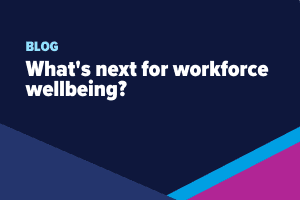Now is the time for allyship: building inclusive workplaces
Now is the time for allyship: building inclusive workplaces
Matilda Fairgrieve, Inclusion and Wellbeing Campaign Officer at Business in the Community, discusses why allyship is essential in 2025 and how inclusive workplaces can drive culture, retention and business success.
Why allyship matters in 2025
Organisations across all sectors are navigating a difficult year. 2025 has brought uncertainty for inclusive organisations: tightened budgets, ripple effects of executive orders in the US, and legislative shifts have been felt collectively. Yet expectations for inclusion remain firm:
This year’s National Inclusion Week serves as a reminder for employers that, despite geopolitical and economic pressures, demand for inclusive practice remains strong. With the theme “Now is the time”, we are made aware that – even during challenging times – allyship and collective action are essential.
What is allyship in the workplace?
Allyship at its core means using individual influence to actively speak up, challenge discrimination, and create opportunities for marginalised communities.3
Research has shown that the greatest impact on inclusion happens where ‘people are not allies, people do allyship’. In other words, persistent practice is more meaningful for the inclusion of marginalised groups as opposed to single actions of allies.4
The question for employers is: does our organisational culture support continuous allyship?
The business case for allyship
BITC’s Race at Work Survey (2021) found that:
Allyship is not passive. It requires:
Employers can create psychologically safe spaces for intergroup dialogue by partnering with BITC’s inclusion advisory team.
Examples of allyship in action
Citizen Housing
Citizen Housing recently partnered with BITC to deliver listening circles for intersectional groups across Race and Ethnicity, Gender and LGBTQIA+. Citizen called the listening circles a “turning point”, shifting their traditional strategy to a belonging and inclusion focus with lived experiences, fairness and individual needs at the centre of everything they do. Consequently, a culture of continuous allyship has been enacted, e.g. creating a new parenting network, sponsored by an organisational director.
Wheatley Group
Wheatley Group partnered with BITC to support their commitment to inclusion through enhancing inclusive leadership. Workshops provided the tools for Wheatley Group’s team leaders to be more consciously inclusive. Discussions on inclusive language, the concepts of privilege and intersectionality were delivered, supporting leaders to act as effective allies.
AXA
Developing knowledge and communication on ED&I topics to support leaders in greater allyship was part of AXA’s ambition to have stronger, more visible leadership on D&I. BITC supported their ambition through facilitating one-to-one conversations with their Executive Management Committee (EMC), exploring topics, knowledge and commitments. Allyship has been embraced by the EMC as a result, with greater ownership and fronting of internal D&I campaigns.
Yorkshire Building Society
Inter-cultural workplace bonds foster a strong foundation for allyship. BITC Member Yorkshire Building Society brought employees together to celebrate Ramadan. Senior leaders and employees partnered with Muslim colleagues, engaging in a one-day fast broken over a shared evening meal to better understand lived experience. The celebration reflected the power of collective action for inclusion and was a stellar example of allyship.
Taking action: now is the time
Feeling inspired? Now is the time to embrace allyship. Employers can:
References
Frequently asked questions (FAQs)
Allyship in the workplace means using your influence to challenge discrimination, support underrepresented groups, and create opportunities for inclusion.
Allyship is vital because employees expect strong commitments to ED&I. Research shows that inclusive workplaces achieve better retention, stronger workplace culture, and measurable business benefits.
Employers can create psychologically safe spaces, provide training on inclusive leadership, and partner with advisory inclusion experts such as Business in the Community, to embed allyship into everyday practice.
Allyship improves employee engagement, supports mental health, and strengthens organisational culture. Companies that invest in ED&I see higher retention and performance.


